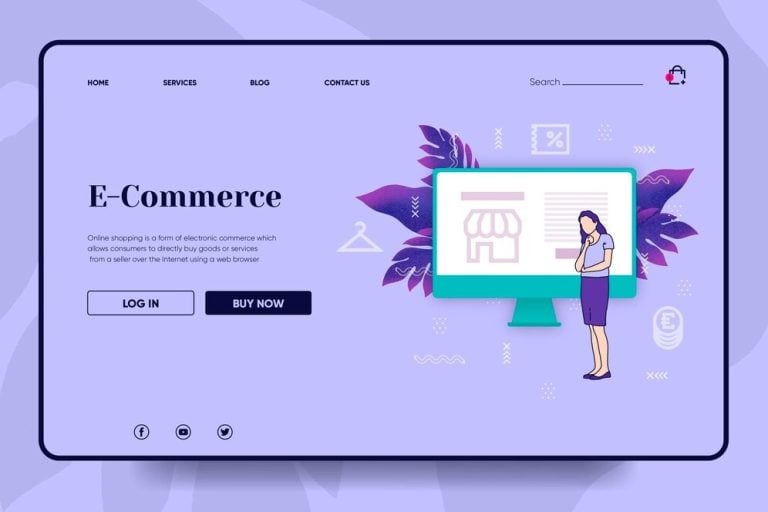In 2025, I know my online store’s success depends on visuals. But there is a truth many business owners choose to ignore. Those beautiful product photos can hide an ugly secret. I have seen how common unethical image sourcing has become.
It is easy to take a photo without thinking about it, but the consequences can be serious. Lawsuits. A damaged reputation. Customers are walking away because they care about the rights of the creators.
This guide isn’t about following rules. It’s about turning ethical practices into a competitive advantage. You’ll learn how to:
-
Find stunning, guilt-free images that boost conversions.
-
Build relationships with creators that lead to unique content.
-
Use image sourcing to showcase your brand values
The landscape of online visuals is changing fast. New platforms, AI-generated content, and evolving copyright laws create both risks and opportunities.
Metrobi drivers are rated 4.97/5
Trusted by local businesses for:
- Background-checked professionals
- Specialized in business deliveries
- Same drivers for consistency
- 4.97/5 average delivery rating
E-commerce website pictures Sourcing Tips for Websites
-
Legal and ethical image use avoids fines and enhances brand trust.
-
Sourcing from trusted platforms is key to ethical compliance.
-
Proper crediting respects creators and builds goodwill.
Research License Agreements
Understanding license agreements is key to ethical image use. Different licenses grant different rights. Royalty-free images might sound cost-free, but they aren’t. They let you pay once to use the image multiple times. Creative Commons images vary. Some let you use them with no changes. Others need crediting or limit commercial use. Licensing confusion abounds, making research crucial.
Before using any image, verify its terms. Make license reading a habit. This avoids potential legal troubles. Image platforms like Unsplash or Pexels often offer free use. They still have fine print to follow. The assumption that ‘free’ means ‘free of restrictions’ is a mistake.
Prioritize Credible Sources
The internet is filled with image sources, but not all are reputable. Well-known platforms ensure strict adherence to ethical sourcing. Sites like Adobe Stock and Shutterstock emphasize clear licensing. On the other hand, some smaller sites might supply images with unclear origins. Ambiguous licensing equals risk.
Trustworthy platforms often curate content supplied by vetted photographers. Thus, the origin of e-commerce website pictures is traceable.
Be wary of platforms that lack information about their licenses. If terms seem suspicious, they likely are. A neglected area is the potential risk of using AI-generated images. These present unique challenges.
Attribute Where Necessary
Proper attribution is not only ethical but can also strengthen brand integrity. Even images branded as ‘free’ might need crediting. Always read the terms to ensure you credit images correctly. Creative Commons licenses often state attribution requirements.
Giving credit encourages a culture of respect towards creators. Failing to do so can harm reputations and invite legal challenges. Attribution involves listing the creator’s name, the image title, and the license type.
Addressing “How Do I Get Product Images for Ecommerce?”
Sourcing product images needs strategic planning. It often starts with proper image sourcing. For those creating images, product photography basics are crucial. High-quality photos require attention to lighting, setting, and resolution. You can start with a neutral background and steady lighting to capture detail.
Another option is generating images using AI. Services like Canva and Adobe Express offer tools for unique creations while ensuring ethical use. However, AI images should be used cautiously, adhering to authenticity and representation guidelines. As you refine your image sourcing strategy, consider how your e-commerce product page can be optimized. Proven techniques show that certain layout and design choices can significantly enhance user engagement and boost conversions. Incorporating high-quality visuals and effective descriptions will create a more compelling shopping experience. For insights on this topic, check out this detailed guide on improving your e-commerce product pages.
Storing product images is as vital as sourcing them. Platforms like Shopify make storage straightforward. They provide user-friendly image libraries for easy management.
Creating a robust image-sourcing strategy involves evaluating sources, understanding licenses, and recognizing the importance of attribution. With ethical images, e-commerce platforms gain competitive advantages by building trust and demonstrating responsibility. If you want to learn more about effective strategies, explore some of the top e-commerce product page examples that have proven to convert in 2025. These insights can provide valuable inspiration for your own online store.
As you refine your image sourcing strategy, understanding the elements of optimized product pages is essential. A well-structured e-commerce product page not only showcases your visuals effectively but also enhances user experience and drives sales. For a deeper dive into proven techniques for improving your e-commerce product pages, make sure to check our latest insights.
Balancing AI and Ethical Image Use
The rise of AI-generated images poses both opportunities and challenges. These images can save time and reduce costs. But they also spark debates about originality and authenticity.
As boundaries blur between real and AI-generated content, clear guidelines become necessary. E-commerce sites need to blend all image types while ensuring ethical compliance. Legal frameworks are evolving to address this. Keeping updated helps navigate this complex landscape.
Concluding the section on image sourcing practices brings us to a logical exploration of where to continue finding the best stock photos. This guides professionals in making informed decisions about their visual strategies.
Best Stock Photo Sites for E-Commerce
Visit Reputable Platforms
It is better to start with well-known platforms. Unsplash, Pexels, and Adobe Stock are great choices. They offer a huge range of images and update them often. Unsplash, for example, has over three million curated photos.
Look for Specialized E-Commerce Collections
Some sites focus on e-commerce visuals. This can make finding the right images easier. These collections are curated with online businesses in mind, ensuring they meet common e-commerce needs.
Compare Subscription Plans
Cost matters when choosing a stock photo site. Some platforms offer better rates if you stick around long-term. For example, Bigstock offers photo packs at $79 per month for five images a day. But remember, it’s about balancing cost with the variety and quality you get.
To guide you further, here’s how we’ll evaluate each platform:
-
Unique Selling Point (USP)
-
User Experience and Interface
-
Image Quality and Diversity
-
Cost Comparison
-
Licensing and Legal Clarity
-
Support and Customer Service
The Rise of Copyright-Free Images Online in 2023
-
More platforms now provide high-quality, free images.
-
Search tools have become more refined and efficient.
-
Community contributions are driving diversity in image options.
Increased Platform Offerings
In 2023, several websites, such as Unsplash, Pexels, and Pixabay, saw a spike in hosting free, high-quality images. Unsplash alone offers over 3 million high-resolution images, making it a powerhouse for anyone seeking visually appealing content. The number of free image providers is growing as creators and users alike seek accessible, ethical options.
Understanding the terminology is crucial; ‘copyright-free’ often misleads. What you might be looking for are ‘CC0 licenses’ or similar arrangements. The ‘Creative Commons Zero license means users can exploit the images however they wish without needing to attribute the creator. But don’t assume all platforms are the same. Some may have additional terms, so a careful review of license terms remains essential. For instance, beyond CC0, some platforms may impose limits against offensive use, ensuring the reputation of the contributors and users.
Improved Search Tools
This year, algorithms for searching images on platforms have improved, making it easier to locate what you need without endless scrolling. Websites like Pexels and Pixabay have advanced search capabilities. These platforms now allow professionals to quickly gain access to niche and specific images, ensuring higher efficiency in sourcing visuals.
Meta-tagging, AI-enhanced image identification, and user-friendly interfaces have made it easier to filter searches based on color, mood, or other specifics. But while these tools aid efficiency, awareness of potential biases in algorithms remains crucial. There are chances that these tools may not fully represent diverse cultures and identities, which is a topic of ongoing debate and analysis.
Community Contributions
In recent years, sites based on community contributions have broadened their offerings. Platforms like Unsplash and Pixabay host countless user-uploaded images, empowering people across the globe to share their visual stories. Currently, Pixabay features over 2.7 million stock images, videos, and musical pieces. This open-border contribution system has led to increased diversity in available image content, allowing for a more comprehensive spectrum of subjects and styles.
Community-driven imagery isn’t just free. It unfolds a canvas that reflects broader cultural and personal narratives. However quality control can sometimes be inconsistent, and images may lack the professional touch of paid stock images. You can think beyond just cost; contemplate the image’s fit for your project’s goals and audience.
Expanding License Types
While many platforms offer images under CC0, others are pushing unique license structures. These licenses allow contributors to retain some creative control while still offering images to the public at no cost. Sites like Burst by Shopify combine this with CC0, effectively setting boundaries that ensure content sharing aligns with contributors’ wishes.
These variations exist not just to protect creators, but also to clarify user rights. This variety refines users’ understanding while expanding choices. However, this complexity can pose challenges, as varied licenses demand more time for users to review and understand the terms fully.
Sustainable Visual Content Strategies for 2024
-
Tap into the power of realistic images. Gain public trust.
-
Cut back on your technical footprint. Save resources.
-
Build links with creators who care about sustainability. Boost your brand.
Embrace Authentic Imagery
Reflect on Real People and Situations
Using genuine images in your e-commerce platform can make your brand more relatable. Over 60% of consumers find themselves trusting a brand more when they see diverse and honest representations in its imagery. Images that feature real people and situations can increase the perceived authenticity of a brand. For example, local products can be photographed in their everyday setting, enhancing relatability and offering a cultural touchstone for regional markets.
Aligning Visuals with Sustainability Values
Images that spotlight sustainability practices can play a crucial role in communicating your ethos. If your brand uses recycled materials or follows a sustainable production process, document and share these visuals. Notably, e-commerce companies like Patagonia successfully integrate visuals that parallel their commitment to sustainability, which strengthens company ethos and builds consumer trust.
Reduce Digital Footprint
Optimizing Images for Faster Load Times
Loading times significantly impact user experience. A page load delay can lead to a bounce rate increase of 32%. Compress and optimize images without losing quality. Tools like TinyPNG and Photoshop’s Save for Web can reduce file sizes effectively. Ensure images are in the right format. Use WebP over JPEG or PNG, as it provides similar quality with smaller file sizes.
Efficient Image Utilization
Be strategic about the number of images. High-resolution images should be used only when necessary. You can create a balance between visual appeal and resource usage. Track data usage and load times regularly with tools like Google Analytics and PageSpeed Insights to keep your website lean.
Collaborate with Ethical Creators
Build Partnerships with Sustainable Photographers
Joining forces with photographers who prioritize sustainability can benefit both your brand and your collaborator. Photographers who focus on capturing nature or sustainable practices can bring fresh, ethical perspectives to your brand’s imagery. Seek out those who adhere to environmental ethics for unique visual content that stays true to your brand values.
Publicize Sustainable Collaborations
It is better to use blogs and social media platforms to showcase your partnerships. By doing so, your content marketing campaign underscores your dedication to sustainability, inviting both potential customers and collaborators. This approach is utilized by leading brands that aim to connect with audiences through shared values on platforms like Instagram and LinkedIn.














